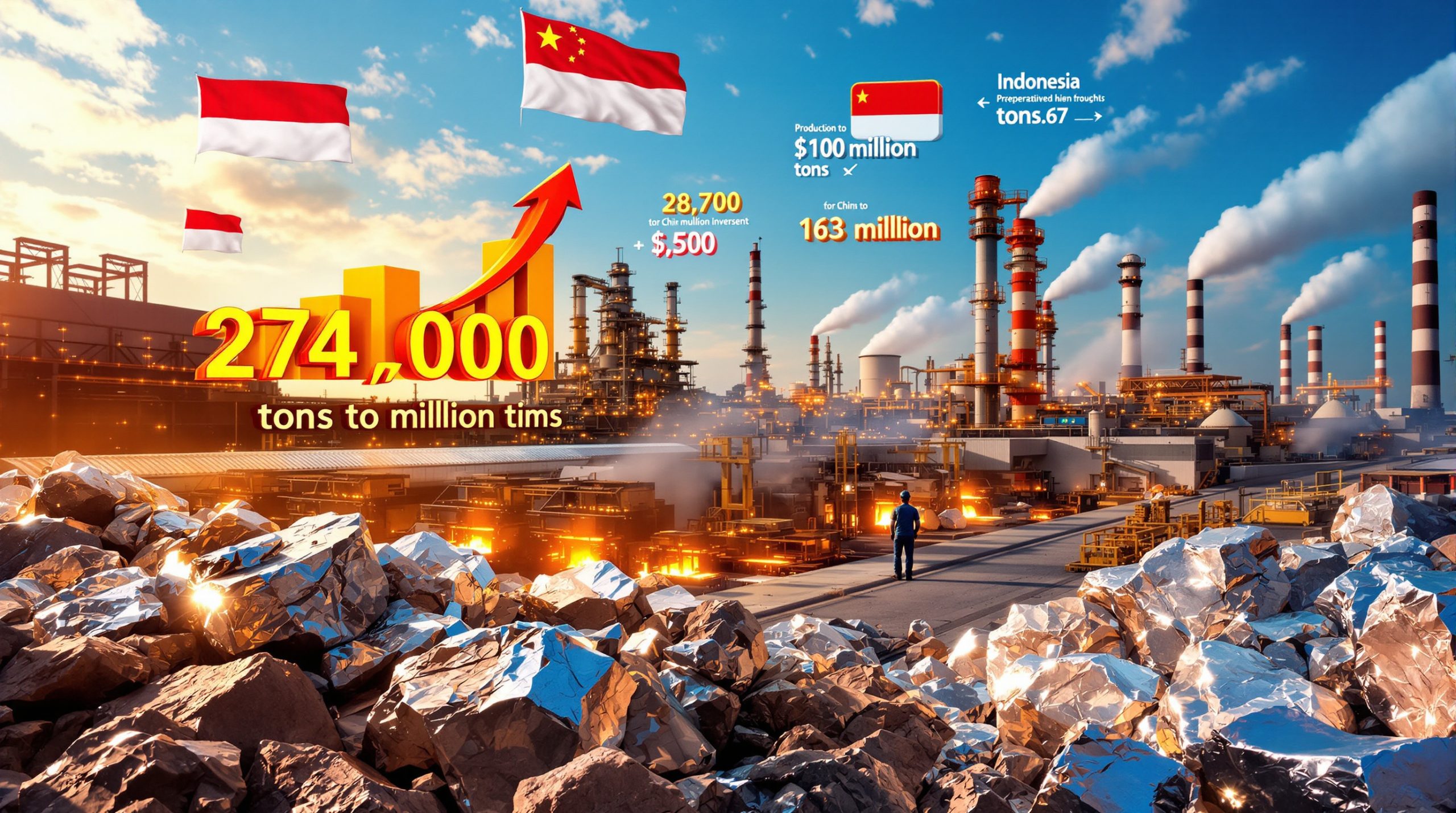What Are the Shanghai Gold Exchange Offshore Vaults?
The Shanghai Gold Exchange (SGE) is establishing strategic offshore gold vaults in key global financial centers, including Hong Kong, Singapore, Zurich, and Dubai. These facilities represent a significant expansion beyond mainland China's existing vault infrastructure in Shanghai and Shenzhen, creating an interconnected network of secure storage facilities operating across multiple time zones.
These aren't merely storage facilities but sophisticated physical gold delivery and trading hubs designed with advanced security systems and technological infrastructure. The Hong Kong facility, operated by Bank of China (Hong Kong) Ltd, became the first operational offshore vault in 2025, marking a pivotal moment in the SGE's international expansion strategy.
Key Features of SGE's Offshore Vault Network
-
Strategic Locations: Positioned in major financial hubs across Asia, Europe, and the Middle East
-
Yuan-Denominated Trading: Supports direct physical delivery of RMB-priced gold contracts
-
Reduced Barriers: Eliminates cross-border customs and regulatory hurdles present in mainland operations
-
Fee Incentives: Initial waiver of storage, deposit, and withdrawal fees to attract international participants
-
24-Hour Trading Access: Creates a continuous global gold trading ecosystem across time zones
Why Is China Expanding Its Gold Infrastructure Globally?
Challenging Western Market Dominance
The establishment of SGE offshore vaults represents a direct challenge to the longstanding dominance of Western gold trading centers, particularly the London Bullion Market Association (LBMA). For decades, London has served as the primary hub for global gold price discovery and physical settlement, with its "Good Delivery" standard setting the benchmark for quality and trading protocols worldwide.
China's strategic vault expansion creates an alternative ecosystem with comparable quality standards but centered around yuan-denominated trading rather than dollar-based transactions. This parallel system provides market participants with options beyond the traditional Western-dominated infrastructure.
How Does This Support Yuan Internationalization?
The offshore vault network serves as a crucial pillar in China's broader strategy to internationalize its currency. By creating physical infrastructure supporting yuan-denominated gold trading and settlement across multiple jurisdictions, China is establishing practical use cases for its currency in international commodity markets.
This approach leverages gold's universal recognition as a monetary asset to create natural demand for yuan among international traders, central banks, and institutional investors seeking access to physical gold through these new channels. The strategy represents a carefully sequenced set of moves that began approximately ten years ago when the Chinese yuan was first included in the IMF's Special Drawing Rights (SDR) currency basket.
Reducing Dollar Dependency in Commodity Markets
A significant motivation behind the SGE's offshore expansion is reducing reliance on dollar-based trading systems. The new vault network enables direct gold transactions without necessarily converting through dollars first, creating pathways for non-dollar settlement in a major commodity market.
This infrastructure development coincides with broader trends showing gold's rising prominence as a reserve asset among central banks globally, now ranking as the second most held reserve asset behind the US dollar but ahead of the euro. China has simultaneously been decelerating its purchases of US Treasury securities while accelerating gold accumulation.
| Year | Central Bank Gold Purchases (Tonnes) | Ranking Among Reserve Assets |
|---|---|---|
| 2022 | 1,136 | 3rd (behind USD and EUR) |
| 2023 | 1,037 | 2nd (surpassing EUR) |
| 2024 | 1,240 (projected) | 2nd (widening gap with EUR) |
How Are SGE's Offshore Vaults Transforming Gold Trading?
Creating Multi-Jurisdictional Trading Options
The strategic placement of vaults across multiple jurisdictions provides market participants with unprecedented flexibility in where they store and trade physical gold. This diversification reduces concentration risk and offers options beyond traditional Western financial centers.
For investors and institutions concerned about potential asset freezes or sanctions risk, the multi-jurisdictional approach provides alternatives that may be perceived as more geopolitically neutral. This concern has intensified particularly since 2022, when many market participants observed how quickly financial assets could be frozen through international sanctions, creating renewed interest in physical assets held in diverse jurisdictions.
Expanding Time Zone Coverage for Global Trading
The SGE's offshore vault network creates a continuous 24-hour physical gold trading ecosystem spanning Asia, the Middle East, and Europe. This expanded time zone coverage addresses a longstanding limitation in physical gold markets, where trading has historically been concentrated during London and New York business hours.
With physical delivery capabilities across multiple time zones, market participants gain:
-
Reduced overnight price risk
-
Greater liquidity during regional trading hours
-
More efficient price discovery across the global trading day
-
Operational flexibility for settlement and delivery
Technological Innovations in Vault Infrastructure
The new offshore vaults incorporate advanced technological systems that enhance security, transparency, and trading efficiency:
-
Digital inventory tracking: Real-time monitoring of gold holdings and movements
-
Blockchain verification: Enhanced audit trails and ownership verification
-
Automated settlement systems: Streamlined delivery processes reducing operational friction
-
Enhanced security protocols: State-of-the-art physical and cyber security measures
What Impact Will SGE Offshore Vaults Have on Global Gold Prices?
Creating New Demand Dynamics
The establishment of SGE offshore vaults is likely to influence gold prices through several mechanisms:
-
Increased institutional accessibility: Easier physical market access for international investors may drive additional demand
-
Reduced friction costs: Lower barriers to physical settlement could narrow the gap between paper and physical gold markets
-
Enhanced market transparency: More visible trading activity across time zones may improve price discovery
-
Expanded investor base: Greater participation from regions previously underrepresented in physical gold markets
Supply Constraints and Vault Accumulation
As more gold flows into these secure storage facilities, the effective available supply in circulation may decrease. This "vaulting effect" could create upward pressure on prices if significant quantities of gold become immobilized in long-term storage rather than actively traded.
The trend of central banks accumulating physical gold reserves further compounds this dynamic, with official sector purchases removing substantial quantities from market circulation. This combination of institutional vaulting and central bank accumulation creates a potential supply-demand imbalance supporting higher prices, with gold recently approaching the $3,900 per ounce level according to the latest gold price forecast.
Price Discovery Shifts and Market Influence
The growth of SGE's offshore vault network may gradually shift price discovery influence away from traditional Western trading centers. As trading volumes increase across these new hubs, their impact on global gold price formation will likely grow proportionately.
This evolution could lead to:
-
More diverse influences on gold price formation
-
Reduced dominance of paper gold markets over physical pricing
-
Greater price sensitivity to Asian and Middle Eastern demand patterns
-
Potential premium development for physical delivery in different regions
How Are Central Banks Responding to These Developments?
Accelerating Gold Reserve Accumulation
Central banks globally have significantly increased their gold purchases in recent years, with this trend accelerating alongside the development of new physical trading infrastructure. Official sector gold buying has reached record levels, with annual purchases exceeding 1,000 tonnes since 2022.
Notable purchasing patterns include:
-
Emerging market central banks: Leading the accumulation trend, with significant purchases from China, Russia, Turkey, and India
-
Middle Eastern monetary authorities: Increasing allocation to gold amid regional economic diversification efforts
-
Eastern European central banks: Rebuilding gold reserves that were previously reduced
-
Southeast Asian monetary authorities: Gradually expanding gold holdings as a percentage of total reserves
Diversifying Storage Locations
Beyond simply accumulating gold, central banks are increasingly diversifying where their gold reserves are stored. Traditionally, many nations kept significant portions of their gold reserves in Western financial centers like New York, London, and Zurich.
The expansion of alternative vault infrastructure provides central banks with more options for securely storing their growing gold holdings. This geographical diversification serves both practical security purposes and strategic considerations regarding jurisdictional risk, with several Middle Eastern nations reportedly moving portions of their gold reserves from London to Singapore and Shanghai.
Implications for International Monetary Relations
The combination of accelerated central bank gold accumulation and the development of alternative physical trading infrastructure signals a potential rebalancing in the international monetary system. Gold's rising prominence in official reserves coincides with broader discussions about reducing dollar dependency in international trade and finance.
As physical gold infrastructure expands globally, central banks gain additional flexibility in how they manage and potentially mobilize their gold reserves. This evolution could influence international monetary relations and reserve currency dynamics over time.
What Does This Mean for Global Investors?
New Access Points to Physical Gold Markets
For institutional and high-net-worth investors, the expansion of SGE's offshore vault network creates additional entry points to physical gold markets. These new facilities may offer advantages in terms of:
-
Geographical convenience: Closer proximity to investors in Asia and the Middle East
-
Trading hour alignment: Better matched to regional business hours
-
Currency flexibility: Options beyond traditional dollar-denominated trading
-
Regulatory familiarity: Operating within familiar regional regulatory frameworks
Portfolio Diversification Considerations
The development of alternative physical gold trading infrastructure reinforces gold's role as a portfolio diversification tool. As global monetary systems potentially evolve toward a more multipolar structure, gold's status as a neutral reserve asset independent of any single national currency becomes increasingly relevant.
Investors may consider:
-
Allocation strategies: Reviewing optimal gold positioning within diversified portfolios
-
Storage jurisdiction: Evaluating where physical holdings are most appropriately kept
-
Currency exposure: Considering implications of yuan-denominated versus dollar-denominated gold trading
-
Market access methods: Assessing direct physical ownership versus various paper gold instruments
Long-Term Market Structure Implications
The evolution of global gold trading infrastructure may have lasting implications for how the market functions. Investors should consider how these structural changes might influence:
-
Price discovery mechanisms: How and where gold prices are primarily determined
-
Premium/discount patterns: Potential regional variations in physical gold pricing
-
Liquidity dynamics: How trading volumes may shift across different global hubs
-
Settlement preferences: Growing importance of physical delivery versus cash settlement
How Might Western Financial Centers Respond?
Modernizing Existing Infrastructure
Traditional Western gold trading centers are likely to respond to this competitive challenge by modernizing their own infrastructure and practices. Potential adaptations include:
-
Technological upgrades: Enhancing digital systems for trading, settlement, and inventory management
-
Extended trading hours: Expanding operational windows to better compete with 24-hour alternatives
-
Fee structure revisions: Reassessing cost structures to remain competitive
-
Regulatory streamlining: Reducing unnecessary friction while maintaining appropriate standards
Potential Collaborative Approaches
Rather than purely competitive responses, there may be opportunities for collaboration between established Western centers and emerging Eastern hubs. Potential areas for cooperation include:
-
Standardization initiatives: Working toward compatible quality and operational standards
-
Interconnected settlement systems: Developing protocols for efficient transfers between different vault networks
-
Market transparency efforts: Sharing data to improve global price discovery
-
Security coordination: Collaborating on best practices for physical and cyber security
Adapting to Changing Market Preferences
Western financial institutions will need to adapt to evolving market preferences regarding:
-
Currency denomination: Potentially offering more multi-currency trading options
-
Physical versus paper: Addressing growing interest in allocated physical holdings
-
Geographical flexibility: Providing more storage location options
-
Technological integration: Meeting expectations for digital access and verification
What Are the Geopolitical Implications of This Gold Market Evolution?
Shifting Power Dynamics in Commodity Markets
The development of alternative physical gold trading infrastructure represents a significant shift in global commodity market power dynamics. Historically, Western financial centers have dominated price discovery and standard-setting for major commodities.
The emergence of SGE's offshore vault network signals a rebalancing of influence, with Eastern financial centers gaining greater capacity to shape market practices and potentially influence pricing mechanisms. This evolution mirrors broader shifts in global economic power toward Asia and represents what some analysts describe as a "geographical tilt" and "power tilt" in the global financial system.
Gold's Role in International Relations
Gold has historically served as both a financial asset and a geopolitical tool. The expansion of alternative physical trading infrastructure may enhance gold's utility in international relations through:
-
Bilateral trade arrangements: Facilitating gold-based settlement for cross-border transactions
-
Reserve asset diplomacy: Using gold allocation and storage as diplomatic leverage
-
Sanctions resilience planning: Creating alternative channels for international settlement
-
Regional monetary cooperation: Supporting potential regional currency arrangements
Long-Term Monetary System Evolution
The development of more geographically distributed gold trading infrastructure coincides with broader discussions about the future of the international monetary system. While no immediate replacement to the current dollar-centered system is emerging, the expansion of alternative infrastructure creates optionality for gradual evolution.
Gold's rising prominence in central bank reserves and the development of more diverse trading infrastructure may support a more multipolar monetary landscape over time, with gold potentially serving as a neutral bridge asset between different currency blocks.
What Future Developments Might We Expect?
Expansion to Additional Strategic Locations
The current offshore vault network represents just the initial phase of what could become a more comprehensive global infrastructure. Potential future expansion locations might include:
-
Seoul: Serving Northeast Asian markets
-
Mumbai: Providing direct access to India's substantial gold market
-
Sao Paulo: Creating a South American hub
-
Johannesburg: Establishing presence near major gold production sources
-
Moscow: Connecting to Eurasian trading networks
Integration with Digital Gold Initiatives
The physical vault infrastructure is likely to become increasingly integrated with various digital gold initiatives. Potential developments include:
-
Tokenized gold products: Digital representations of physical gold with vault backing
-
Blockchain verification systems: Enhanced transparency and ownership tracking
-
Smart contract integration: Automated trading and settlement protocols
-
Central bank digital currency connections: Potential linkages to emerging CBDC systems
Evolution of Trading Practices and Standards
As the new infrastructure matures, we may see the emergence of:
-
New benchmark prices: Regional reference rates gaining global recognition
-
Quality certification standards: Alternative or complementary to traditional "Good Delivery" standards
-
Trading hour conventions: Adjusted patterns reflecting global 24-hour market access
-
Settlement protocols: Standardized practices for physical delivery across the network
How Can Market Participants Navigate This Evolving Landscape?
Strategic Considerations for Institutions
Financial institutions, asset managers, and corporate treasuries should consider:
-
Diversifying access points: Establishing relationships with multiple trading venues
-
Reviewing storage strategies: Evaluating optimal vault jurisdictions for physical holdings
-
Assessing currency exposure: Considering implications of trading in different denominations
-
Monitoring regulatory developments: Staying informed about evolving rules across jurisdictions
Practical Steps for Individual Investors
Individual investors interested in physical gold might consider:
-
Storage options: Evaluating personal holdings versus professional vault storage
-
Access methods: Assessing direct ownership versus various gold-backed investment products
-
Jurisdictional diversification: Potentially spreading holdings across different regions
-
Premium/discount awareness: Understanding regional pricing variations in physical markets
Staying Informed About Market Evolution
All market participants should prioritize:
-
Monitoring trading volumes: Tracking how liquidity develops across different hubs
-
Following regulatory changes: Staying updated on evolving rules in key jurisdictions
-
Observing central bank behavior: Noting official sector purchasing and storage patterns
-
Tracking technological developments: Following innovations in trading and settlement systems
Conclusion: A Transformative Period for Global Gold Markets
The establishment of Shanghai Gold Exchange offshore vaults represents a significant milestone in the evolution of global gold markets. This infrastructure development coincides with broader trends including accelerating central bank gold purchases, growing interest in physical allocation, and discussions about the future of the international monetary system.
While the full implications will take years to fully manifest, the creation of this alternative physical gold trading infrastructure marks an important shift toward a more multipolar market structure. Market participants across the spectrum—from central banks to institutional investors to individual gold owners—should carefully consider how these developments might influence their approach to this enduring monetary asset.
The expansion of physical gold trading infrastructure beyond traditional Western financial centers reflects both the growing economic influence of Eastern nations and the enduring relevance of gold in an evolving global financial landscape. With gold market surge approaching $3,900 per ounce and forecasts suggesting potential rises to $4,500 by year-end 2025, the infrastructure supporting this market is transforming in parallel with its valuation according to the latest all-time high gold analysis and technical gold analysis.
FAQs About SGE Offshore Vaults
How do SGE offshore vaults differ from traditional Western gold storage facilities?
SGE offshore vaults offer yuan-denominated gold trading and settlement, operate across multiple time zones, and provide alternatives to traditionally Western-dominated market infrastructure. They maintain comparable quality standards while reducing barriers to international participation through strategic locations and initial fee incentives.
Will these new vaults affect gold prices?
The expansion of SGE offshore vaults may influence gold prices through several mechanisms, including increased institutional accessibility, reduced friction costs, enhanced market transparency, and the potential "vaulting effect" as more gold becomes immobilized in secure storage facilities rather than actively traded.
How might central banks utilize these new facilities?
Central banks may use these facilities to diversify their gold storage locations, reduce jurisdictional concentration risk, and potentially facilitate more direct gold-based transactions with other monetary authorities. The infrastructure provides additional flexibility in how official sector gold reserves are managed and potentially mobilized.
What implications does this have for the US dollar's role in global finance?
The development of yuan-denominated gold trading infrastructure creates pathways for non-dollar settlement in a major commodity market. While not directly challenging the dollar's broader role, it represents one component of a gradual diversification in global payment and settlement options, particularly for physical commodity transactions.
How might Western financial centers respond to this development?
Western gold trading centers are likely to respond through technological modernization, potential fee structure revisions, extended trading hours, and possibly collaborative approaches with emerging Eastern hubs. The competition may ultimately benefit market participants through improved services and reduced friction costs across the global gold market.
Further Exploration:
Readers interested in learning more about developments in global gold markets can also explore related educational content on YouTube channels covering financial and geopolitical topics that discuss the evolution of international gold trading infrastructure and central bank reserve strategies.
Looking to Profit from the Next Major Gold Market Move?
Don't miss critical developments in the evolving gold market landscape. Discovery Alert's proprietary Discovery IQ model provides real-time notifications on significant mining discoveries and market movements, giving you the edge in spotting actionable opportunities before the broader market. Visit our discoveries page to see how historic mineral findings have generated substantial returns for early investors.




